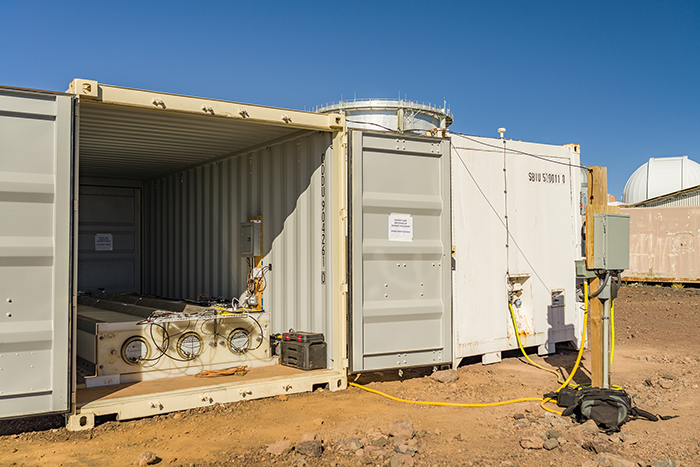Neutron Monitor

- Overview & Purpose
Neutron monitors detect high-energy particles from the Sun, including solar energetic particles and solar neutron particles. These particles pose risks to astronauts, can cause failures in space electronics, and disrupt satellites and space-based technologies. - Neutron Monitor Stations
Haleakalā Neutron Monitor Station (HLEA) - in collaboration with the University of New Hampshire Located at 10,000 feet on Haleakalā, Maui. Captures more solar neutron particles due to longer daily sun exposure and minimal seasonal variations. Thailand-Hawaiʻi Monitor (THIMON) - in collaboration with Chang Mai University Installed alongside HLEA to enhance the global neutron monitor network's coverage. Global Importance: The monitors fill a critical 162-degree gap in the global neutron monitor network between Mexico and Thailand. This will help to improve worldwide space weather forecast. - Space Weather Control Center
Established at UH Mānoa to analyze data from neutron monitors. Supports real-time monitoring and forecasting efforts. - Funding & Collaboration
Funded by a $2.5 million NSF grant over four years. Collaborations with University of New Hampshire and University of Arizona.
Space Weather

- What is Space Weather?
Space weather refers to solar activity and its effects on Earth and space-based technology. Events like solar flares, coronal mass ejections, and energetic particle emissions can disrupt satellites, power grids, and communication systems. - Solar Cycle 25 & Forecasting
The project aligns with Solar Cycle 25, expected to reach maximum activity in summer 2025. Data collected will help predict and mitigate space weather events. - Impact on Technology & Human Space Exploration
Space weather can: Disrupt GPS, satellite communications, and power grids. Pose radiation risks to astronauts and high-altitude flights. Affect spacecraft functionality and space missions. - International Collaboration & Research
The project is part of a global effort to enhance space weather forecasting. International workshops bring together scientists worldwide to discuss new findings and advancements.
